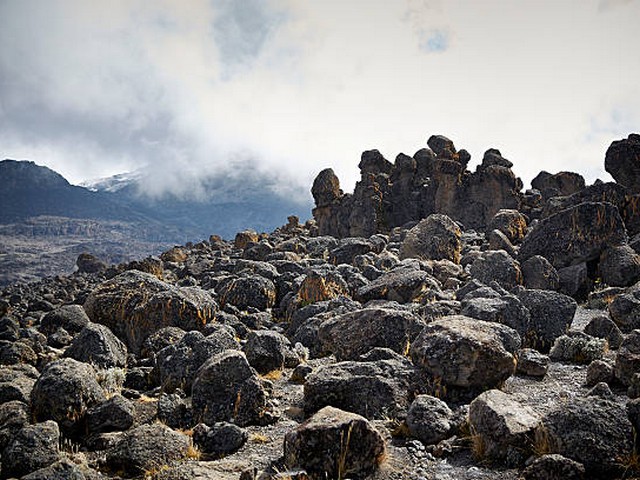Kilimanjaro Summit Photos: How To Capture The Moment
Reaching the summit of Mount Kilimanjaro is a breathtaking achievement, quite literally! Standing atop Africa’s highest peak, you’re on the roof of the continent, where the air is crisp, and the scenery is awe-inspiring. At Kilimanjaro Centre for Trekking and Ecotourism (KCTE), we understand the significance of this moment. More importantly, we know how crucial it is to capture this monumental experience in photos that do justice to your triumph and the stunning vistas. In this blog post, we’ll guide you through the best practices for capturing those perfect Kilimanjaro summit photos that will keep your memories vivid and inspire others to embark on this incredible journey.
Preparing for Your Photographic Journey
Choosing the Right Equipment
When it comes to photography, especially in challenging environments like Kilimanjaro, the right equipment is key. You’ll want a camera that can handle cold temperatures and varying light conditions. A DSLR or a mirrorless camera with manual controls to adjust exposure and focus is ideal. However, even high-end smartphones nowadays come equipped with excellent cameras that can do quite a decent job. Remember to bring extra batteries as they drain faster in cold conditions, and keep them close to your body warmth.
Understanding the Best Times for Photography
The golden hours, just after sunrise and just before sunset, provide the most magical light for photography. However, at Kilimanjaro’s summit, Uhuru Peak, you might reach the top outside these times, often very early in the morning. Don’t worry; the clear morning light can be equally spectacular, casting a crisp, even glow that’s perfect for grand, scenic shots.
Techniques for Capturing Stunning Summit Shots
Mastering the Art of Composition
Composition is crucial in photography. Use the rule of thirds to balance your shots, placing the subject off-center for a more pleasing aesthetic. At the summit, incorporate elements like fellow climbers, the famous sign at Uhuru Peak, or distant glaciers to add perspective and depth to your images.
Dealing with Harsh Sunlight
At the high altitudes of Kilimanjaro, sunlight can be particularly harsh. Use your camera’s HDR (High Dynamic Range) mode to balance the light and shadows in your photos. If your camera doesn’t have HDR, taking multiple exposures of the same scene to later blend them can be a great alternative.
Capturing the Human Element
Photos of the landscape are breathtaking, but capturing the human element – the joy, the exhaustion, the triumph – adds a powerful narrative to your images. Snap those candid moments of your climbing group supporting each other, or a solitary climber reflecting on their journey.
Essential Tips for Kilimanjaro Photography
Acclimatization and Preparedness
Taking great photos is only possible if you’re well-acclimated and not overly exhausted. Our climbs at KCTE are designed to give you the best chance of acclimatization with gradual ascents and expert guidance. The better you feel, the more you can focus on photography.
Protecting Your Camera Gear
The mountain’s environment can be harsh on electronic gear. Use a sturdy, water-resistant bag or case for your camera, and consider using a UV filter to protect your lens from the intense sun.
Respecting the Mountain and Fellow Climbers
While capturing photos, it’s vital to respect the natural environment and your fellow climbers. Avoid blocking paths and take care not to damage any natural or man-made structures. Always ask for permission before taking photos of people.
Why Choose KCTE for Your Kilimanjaro Adventure?
At Kilimanjaro Centre for Trekking and Ecotourism, we not only provide you with the logistical support to reach the summit, but we also enhance your experience by ensuring you have ample opportunities to capture it through your lens. Our expert guides are trained in helping photographers find the best spots and times for unforgettable photos.
FAQs: Capturing Kilimanjaro’s Summit in Photos
What’s the best type of camera to bring for Kilimanjaro summit photos?
A DSLR or mirrorless camera with manual settings is ideal, but high-quality compact cameras and smartphones can also capture great photos under the right conditions.
How do I keep my camera batteries charged in cold weather?
Keep spare batteries in close contact with your body in an inner pocket to keep them warm and maintain charge.
Can I use a drone to capture aerial photos?
Drone use is subject to local regulations, and currently, Tanzania National Parks Authority (TANAPA) has strict rules regarding their use. It’s best to check the latest regulations or consult with KCTE before planning to use a drone.
Are there specific photography tours on Kilimanjaro?
Yes, at KCTE, we offer specialized photography tours designed to align with the best light conditions and provide ample time for capturing the perfect shots.
Capture the Summit with KCTE
Documenting your climb up Kilimanjaro is as much about capturing the landscape as it is about recording your personal journey. With KCTE, you’re choosing a partner that values the importance of both. Ready to take on the adventure of a lifetime and bring back photos that will amaze? Book your Kilimanjaro climbing experience with Kilimanjaro Centre for Trekking and Ecotourism today, and let’s ensure your summit memories are perfectly preserved. Visit us at KCTE.com to start your journey!
Capture more than just images; capture emotions, achievements, and unforgettable memories with every shot. Let your Kilimanjaro summit photos be a testament to your spirit and our dedication. Join us, and let’s reach the peak together!




